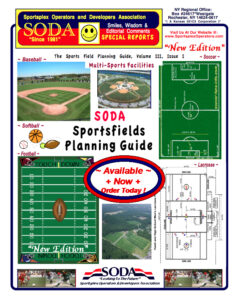March 2, 2017 ·
Beacon Athletics Blog & Ballfield Tips
Spring training is underway and college baseball is in full swing now as well. The fields you maintain are three acres of land, including the warning track all the way to the fence line. Within those three acres, I would like to discuss one small section of the field that can have an enormous impact on the quality of play at your facility. It is the dirt area in front of home plate… two straight sides along the foul lines and an arc edge at the top. To some, that area of the infield may be an afterthought, but to players and coaches at higher levels of the game this patch of dirt is a big factor for infield playability.
So many people in and around the game of baseball obsess over the height of cut of the infield turfgrass. Mowing height certainly is one part of the equation that determines the speed and pace of infield ground balls. There are a few other factors to consider however. The density of the turfgrass and the amount of actively growing leaf surface are an important factor. The makeup of the root zone for the turfgrass is critical as well. The degree of compaction in the root zone is a factor, as is the moisture content during the game. Over the years, as you hopefully gain perspective by watching hours and hours of baseball workouts and games, you absorb in your mind what balls do when hit on the ground. Some hit the dirt in front of the plate, some hit the turf and others scoot through the infield in a hurry.
The goal for your infield turfgrass is to have a dense, healthy plant that contains a turfgrass/ soil matrix that is going to absorb the force of the batted baseball. Regular mowing with sharp blades will help with your plant density and ground ball consistency. Aerification as frequently as is feasible, be it solid or hollow tined it will certainly help keep the infield root zone from becoming too hard. The physical makeup of your root zone will determine your approach to irrigation and fertility management. Whether you have a sandy growing medium or a variable native soil root zone, your goal with irrigation should be to have adequate — but not excessive — moisture in the plant on game day. Ideally, you would irrigate far enough in advance of the game that the upper portion of the turfgrass is able to dry down sufficiently to allow for quality footing and minimal divots. Your fertility program should be balanced and consistent. Too much nitrogen releasing at any one time will lead to a slick surface and reduced footing on the turfgrass.
So now back to that dirt in front of home plate. I have always felt that any ball hitting that area of dirt off the bat has no business leaving the infield, or being a hit. The pitcher threw a quality pitch and got the hitter to make contact with the ball at an angle where it did not even reach the infield turf. That ball should produce an out…no question. So what does the firmness of the dirt in that area mean to an infielder? When it is dry and hard, the ball off the bat will gain acceleration and increased topspin. When the infielder gets the last hop before fielding and throwing, a ball in this instance will have a little extra mustard on it, and will jump up higher on him as he fields it and gathers himself to make the throw. If the dirt in front of the plate is soft and consistently moist all the way down through the soil profile, it will reduce the speed of the baseball and take away the excessive topspin of the ball hit with a downward angle there.
How do we reach our goals for optimum game day playability on the infield? The dirt in front of home plate is a big consideration. As your season has just begun, or will commence shortly, please consider what you can do to improve your field by working in this one small area. Remember the basic principles at play here. Hard dirt will lead to increased acceleration of the baseball and produce greater topspin. Soft dirt will mean deceleration of the ball and reduced topspin. You can choose what you want the dirt in front of home plate to be on your diamond. Very firm or extremely soft or perhaps somewhere in between. Keep in mind that catchers have to field bunts in this area, so overwatering it prior to a game could be a problem. Your primary goal, short of any renovation, should be to thoroughly water this area to the point of saturation once a day, ideally after practice or the game, so that it soaks in overnight. There are some things to consider with a heavy watering. You may want to create a small dam of sorts so that your soaking does not encroach the clay in your batters boxes. You must also consider when you work with this area that runners leaving the batters boxes will straddle the first base foul line, so that area needs to maintain the firmness you want in a baseline. Finally, to maintain the highest level of consistency in your home plate area, be sure to tarp it every night after your practice or game.
Do you have time for a renovation in front of home plate? As the ground thaws and you focus on getting play up and running, perhaps a quick roto tilling in this spot is a possibility. Your goal in such a renovation would be to roto till calcined clay into the dirt area in front of home plate. Evenly spread six bags over the area and then work it in with a walk behind roto tiller. An increase of calcined clay to this area will mean an increase in moisture retention, which will make it less likely to get hard on a daily basis. Please keep in mind that any area you till up in the spring will need to be rolled and carefully hand graded as well. Ideally you would want a week or two for the material in this area to get soaked and rolled, so it can set up before play begins. In the fall this is a great project you can approach quite aggressively. In the spring you must consider timing and weather. If you are not able to till material in this spring, consider working calcined clay in a bit at a time with a sharp, steel rake when your schedule allows it. Also, keep in mind base runners going up the 1st base line… stay about a foot inside the foul line with any tilling or aggressive renovation you might do.
Consider the resources you have available to you today. From there, determine an approach for you that will improve the playability of your infield. Remember that your goal should be to reduce the force of the batted ball while maintaining quality footing for the players. Think about where the ground ball begins on a baseball field and what you can do to make your field better. Spring is here and it is time to get at it. . . . . . . . . . . . . . . . .
Larry Divito
As head groundskeeper for the Minnesota Twins Baseball Club, Larry DiVito has worked in professional baseball for 23 years. Beginning as the head groundskeeper for the AAA Pawtucket Red Sox in 1995, Larry moved to Dodger Stadium in 2002 as assistant groundskeeper. After four seasons with the Dodgers, he was named head groundskeeper for the Washington Nationals in 2006. In his three seasons there, Larry was involved with the building of Nationals Park, which opened in 2008. He moved to Minnesota in 2009 to be a contributor with the construction of Target Field, which he helped open for the Twins in 2010. As a member of the Sports Turf Managers Association, Larry spent three years on the STMA Board of Directors from 2008-10.
. . . . . . . . . . . . . . . . . . . . . . . . . . . . . . . . . . . . . . . . . . . . . . . . . . . . .
It’s Never To Late To Save Your Program Money !
Check Out Our Insurance Program Today !

www.sadlersports.com/soda
. . . . . . . . . . . . . . . . . . . . . . . .
 “Proudly Serving The USA/Canada Since 1981”
“Proudly Serving The USA/Canada Since 1981”
www.sportsplexoperators.com
. . . . . . . . . . . . . . . . . . . . . . . .
“Proudly Serving The USA/Canada Since 1981”
. . . . . . . . . . . . . . . . . . . . . . . . . . . . . . . . . . . . . . . . . . . . . . . . . . . . .





0 Comments